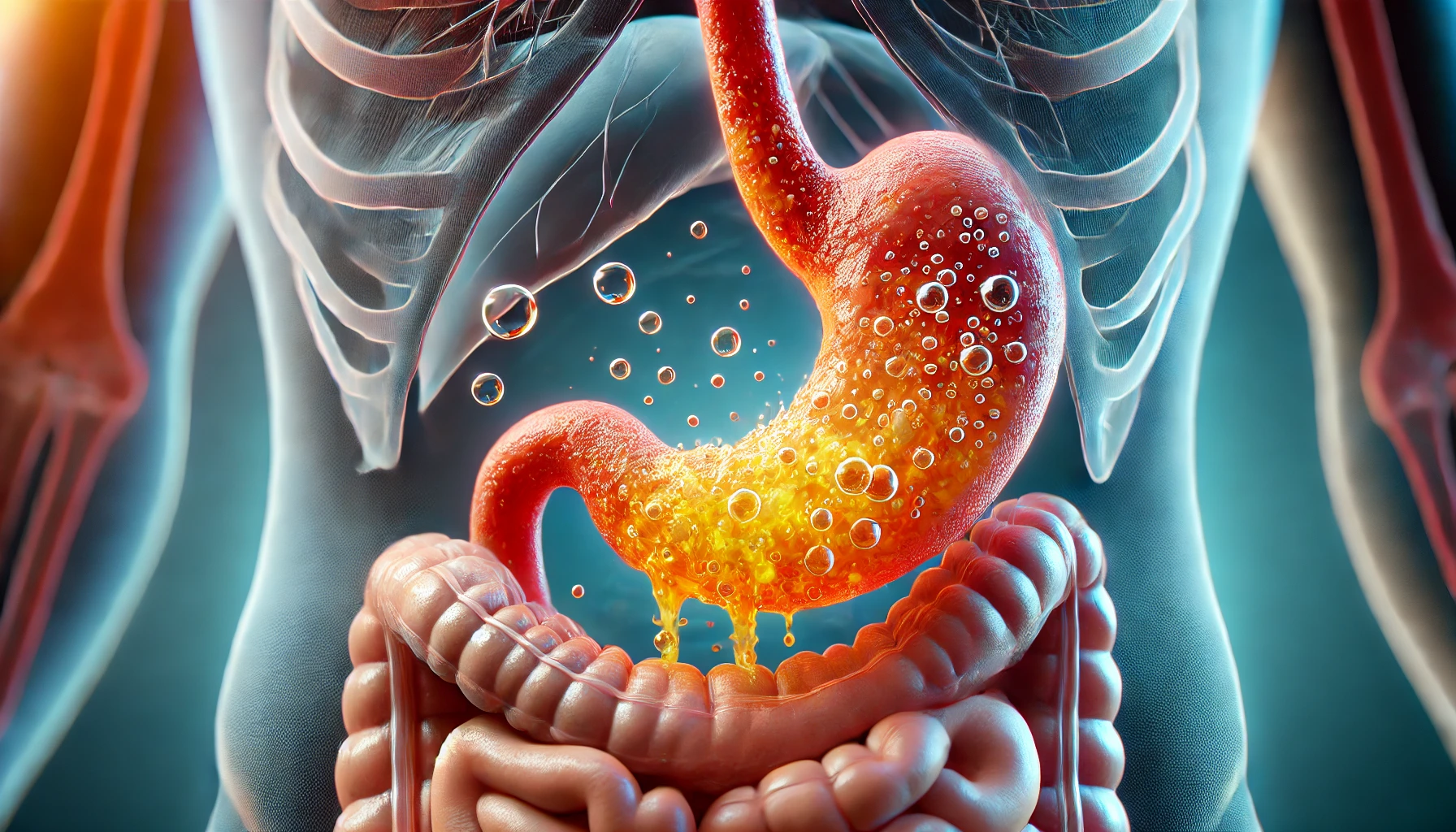This post was written with Consensus AI Academic Search Engine – please read our Disclaimer at the end of this article. Gastroesophageal Reflux Disease (GERD) is a chronic condition characterized by the abnormal reflux of stomach contents into the esophagus, leading to troublesome symptoms and potential complications. It is one of the most prevalent gastrointestinal disorders worldwide, particularly in Western countries3 4.
Symptoms
GERD manifests through a variety of symptoms, which can significantly impact a patient’s quality of life. The most common symptoms include:
- Heartburn: A burning sensation in the chest, often after eating, which might be worse at night1 4 5.
- Regurgitation: The sensation of acid backing up into the throat or mouth, producing a sour or bitter taste1 4 5.
- Dysphagia: Difficulty swallowing1 5.
- Chest Pain: Pain that can mimic the symptoms of a heart attack1 5.
- Coughing and Hoarseness: Chronic cough and changes in voice due to irritation of the throat1 5.
Pathophysiology
The pathogenesis of GERD is multifactorial, involving both anatomical and functional abnormalities. Key mechanisms include:
- Transient Lower Esophageal Sphincter Relaxations (TLESRs): These are the primary mechanism for acid reflux, where the lower esophageal sphincter (LES) relaxes inappropriately, allowing stomach contents to flow back into the esophagus1.
- Impaired Esophageal Clearance: Reduced ability of the esophagus to clear refluxed material, leading to prolonged acid exposure1.
- Hiatal Hernia: A condition where part of the stomach pushes up through the diaphragm, contributing to reflux5.
Complications
If left untreated, GERD can lead to several serious complications:
- Esophagitis: Inflammation of the esophagus, which can cause ulcers and bleeding5.
- Barrett’s Esophagus: A condition where the esophageal lining changes, increasing the risk of esophageal adenocarcinoma5 9.
- Strictures: Narrowing of the esophagus due to scar tissue, leading to difficulty swallowing10.
Classification
GERD can be classified into different phenotypes based on endoscopic findings:
- Erosive Esophagitis (EE): Visible erosions in the esophageal lining9.
- Non-Erosive Reflux Disease (NERD): GERD symptoms without visible esophageal erosions, further subclassified into abnormal acid exposure (AAE) and normal acid exposure (NAE) based on pH monitoring9.
- Barrett’s Esophagus (BE): A condition where the normal squamous epithelium of the esophagus is replaced with columnar epithelium9.
Conclusion
GERD is a chronic and potentially life-long condition that can significantly impair quality of life and lead to serious complications if not properly managed. Understanding its symptoms, pathophysiology, and potential complications is crucial for effective diagnosis and management. Further research is needed to better understand the long-term outcomes and optimal management strategies for GERD.
Disclaimer
The content presented in this blog is generated by Consensus, an AI-powered academic search engine, and is based on publicly available scientific literature. While every effort is made to provide accurate, up-to-date, and well-researched information, the content is intended for informational and educational purposes only. It does not constitute medical advice, diagnosis, or treatment. Always consult a qualified healthcare professional before making any decisions regarding medical conditions, treatments, or medications. The AI system’s analysis may not cover all perspectives, emerging research, or individual cases, and it is not a substitute for professional expertise. Neither the blog publisher nor the developers of the AI-powered search engine are responsible for any actions taken based on the information provided in this content. Use of this information is at your own risk. Citations to the original scientific studies are included for reference, but these studies should be reviewed in full and interpreted with the guidance of a healthcare or research professional.
If you are experiencing a medical emergency, please seek immediate attention from a healthcare provider.
